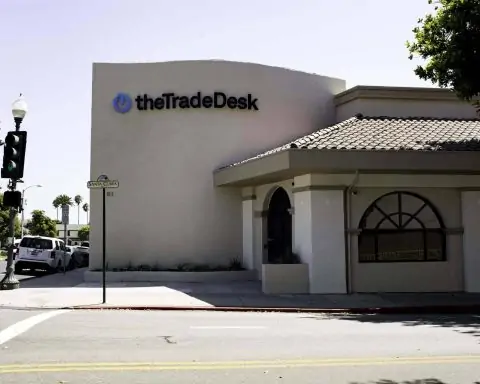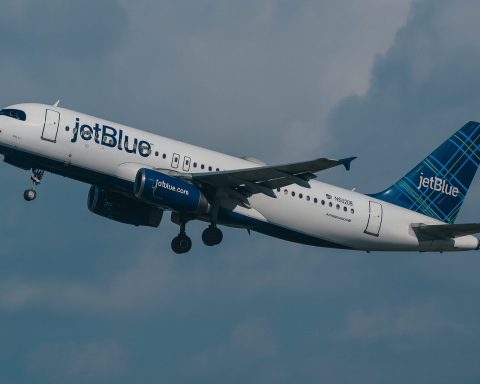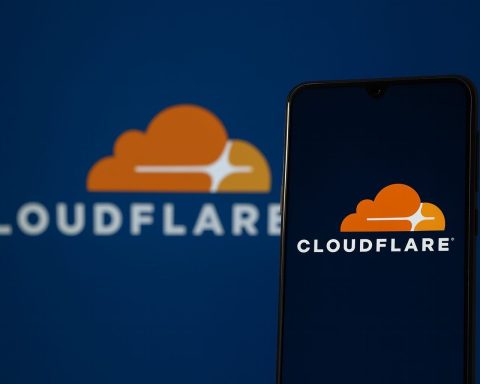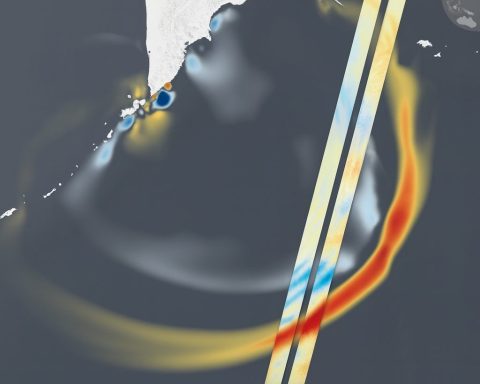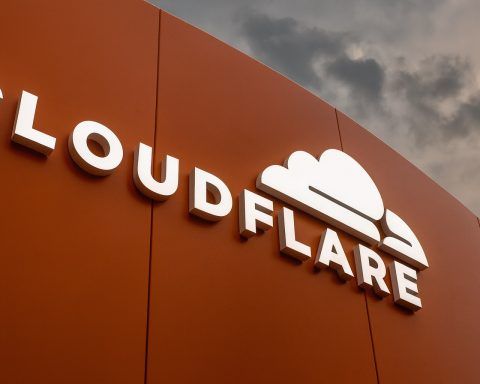- Malta has 100% fixed broadband coverage with gigabit-capable networks via fiber or upgraded cable, exceeding the EU average of 70% and ranking 6th in the 2022 DESI index for digital development.
- As of early 2024, FTTH connections accounted for about 34% of fixed broadband subscriptions, up from 26.8% in 2023.
- GO’s True Fibre network offers up to 1000 Mbps download, with about 96% geographic fiber coverage achieved by 2023 and a target of 100% FTTH by end-2025.
- Melita’s DOCSIS 3.1 cable network delivers gigabit download speeds nationwide and Melita launched a 2.5 Gbps residential plan in 2023.
- Epic markets fiber internet up to 2 Gbps in select areas and began its own FTTH deployment in 2021, with promotions like 1000 Mbps at €44.99/month (often discounted).
- Malta’s fixed broadband services have no data caps, allowing unlimited usage.
- 4G coverage reaches about 99% of the population and 5G rollout began in 2021; by 2023 all three operators had 5G services with typical speeds of 200–400 Mbps and unlimited 5G data plans around €25–€30/month.
- Starlink became available in Malta around 2023, with residential service around €50/month plus roughly €350–€400 for the dish kit, offering speeds over 100 Mbps and latency of 20–40 ms.
- The Maltese government has recognized internet access as a civil right since 2012 and maintains a Universal Service Obligation updated in 2021 to ensure affordable broadband.
- The MCA operates free public Wi‑Fi hotspots across Malta and Gozo, while a Student Internet Voucher Scheme provides eligible post-secondary students with a €300 voucher (now in its 5th year in 2025), benefiting over 7,500 students with more than €5 million invested.
Overview of Malta’s Internet Infrastructure
Malta boasts one of Europe’s most advanced digital infrastructures. The nation has achieved 100% coverage with very high capacity networks (VHCN) – meaning every household can access gigabit-speed broadband via fiber or upgraded cable networks [1]. This far exceeds the EU average of 70% and places Malta as the only EU country with complete gigabit internet availability [2]. High broadband penetration (around 88% of households) reflects strong demand, and Maltese internet users enjoy some of the fastest data rates in Europe [3].
This robust infrastructure is supported by Malta’s geography – the small size and dense population make it easier to deploy fiber across the islands [4]. Major investments by operators have extended fiber-optic lines throughout Malta and Gozo, supplemented by modern cable systems. Internationally, Malta is linked via submarine fiber optic cables (including new links to Italy and beyond) that provide ample bandwidth and redundancy for global connectivity [5]. The government and regulator (Malta Communications Authority, MCA) have actively fostered this development through strategic plans and a pro-competitive regulatory framework, ensuring that internet access is treated as essential infrastructure. In fact, Malta moved to enshrine internet access as a civil right as early as 2012, coinciding with plans for a nationwide fibre-to-the-home rollout [6]. All these factors position Malta as a “digital island” leader in EU connectivity rankings, with an overall 6th place in the 2022 DESI index for digital development [7].
Despite top-tier fixed broadband coverage, Malta has lagged in one area: 5G mobile coverage. As of 2022, only about 20% of Malta was covered by 5G signals, far below the EU average of 66% [8]. This gap is closing as operators accelerate their 5G rollouts (more on that below). Overall, Malta’s internet infrastructure offers a strong foundation, from island-wide fiber and cable gigabit networks to emerging 5G and satellite services, truly making the internet a digital lifeline for the country’s economy and society.
Main Types of Internet Access in Malta
Malta’s residents can choose from a full range of internet access types. The main categories are fixed broadband (delivered via fiber-optics, cable, or DSL phone lines), mobile broadband (3G/4G/5G cellular data), and satellite internet. Each plays a role in ensuring connectivity across urban and rural areas.
Fixed Broadband: Fiber-Optic, Cable, and DSL
Fixed broadband is the cornerstone of Malta’s internet, with virtually all homes connected via either fiber or cable networks. Over the past few years, Malta has seen a dramatic shift from legacy DSL (telephone line internet) to modern fiber-to-the-home (FTTH). All major ISPs now offer fiber plans, and as of early 2024 FTTH connections represented about 34% of all fixed broadband subscriptions, up from 26.8% the year before [9]. The incumbent operator GO has been aggressively replacing old copper lines with fiber, and its network is on track to reach 100% fiber coverage by end of 2025 [10]. In parallel, competitor Melita – historically a cable broadband provider – launched its own FTTH rollout in late 2023 [11], starting to convert parts of its coaxial cable network to fiber. Even Epic (formerly Vodafone Malta) entered the fixed broadband market via a wholesale VULA agreement to use GO’s fiber infrastructure [12] [13], and began laying its own fiber in select areas in 2021.
Thanks to these developments, Maltese consumers enjoy widespread high speeds. Cable broadband, provided by Melita’s island-wide Hybrid Fibre Coax (HFC) network, still accounts for the largest share of fixed subscriptions (~47% in Q1 2024) [14]. Melita’s DOCSIS 3.1 cable system can deliver gigabit download speeds nationwide, making Malta unique in having gigabit service available to every household [15]. Meanwhile, GO’s full-fiber “True Fibre” network offers plans up to 1000 Mbps (1 Gbps) download, with the company reporting about 96% geographic fiber coverage by 2023 [16]. GO’s fiber plans typically provide around 1000 Mbps down and 60 Mbps up [17], and the entry-level fiber tiers (after recent upgrades) now start at 300 Mbps or higher.
DSL (traditional copper phone line broadband via ADSL/VDSL) has rapidly dwindled – DSL subscriptions fell by over 35% year-on-year as customers migrated to fiber [18]. By 2024 DSL likely accounts for under ~10% of connections. A small segment of users (around 7-8%) use fixed wireless broadband as an alternative, often via 4G/5G routers in areas where fiber or cable installation is lacking [19]. This “Plug and Play” home internet over mobile networks is offered by ISPs like GO and Epic as an immediate solution (e.g. GO’s Plug’n’GO is a 4G/LTE router plan up to 50 Mbps, aimed at those needing quick setup) [20].
In terms of performance, Malta leads Europe in high-speed adoption: over 53% of broadband connections deliver 100+ Mbps (vs 41% EU average) [21]. Many users opt for ultrafast tiers – by end of 2024, about 20% of fixed subscribers were on gigabit plans (47,900 customers) [22]. The most popular speed tier is between 500 Mbps and 1 Gbps, comprising one-third of subscriptions [23]. Importantly, unlike some countries, Malta’s fixed broadband services have no data caps, allowing unlimited usage [24]. Pricing for home internet is generally reasonable though slightly above some EU peers. Monthly costs range from ~€25 for basic plans (e.g. 100 Mbps DSL or entry-level cable) up to ~€45-€50 for 1 Gbps fiber plans [25]. For example, Epic offers 1000 Mbps fiber at €44.99/month (with a promo of half price for the first 2 months) [26], while Melita’s 1 Gbps “Fibre Power” plan is often bundled in a €40-€50 range with TV or phone. Both GO and Melita have run promotions of “6 months free” on annual contracts for high-tier plans [27] [28], indicating a competitive market.
It’s worth noting that multi-gigabit broadband is on the horizon. Melita has begun offering a top-tier 2.5 Gbps plan in some areas, and in 2023 the company announced a €50 million investment to upgrade its network to support 10 Gbps speeds by 2030 [29] [30]. This future-proofing means Maltese users could have access to 10 Gigabit home connections as device capabilities catch up. In the meantime, a nationwide 1 Gbps baseline is already a reality, whether via GO’s FTTH or Melita’s cable, ensuring Malta’s fixed broadband users are among the best-served in Europe.
Mobile Internet: 4G and 5G Networks
Mobile broadband is ubiquitous in Malta, with 4G LTE available to virtually 100% of the population and robust competition among three mobile operators. Affordable mobile data plans (often with unlimited or very generous data caps) allow smartphones and wireless modems to serve as a primary internet source for many. In fact, mobile broadband take-up is about 87% in Malta, on par with EU averages [31]. All three operators – Epic, GO, and Melita – operate 4G networks that blanket both Malta and Gozo, providing typical download speeds in the tens of Mbps (often 30–100 Mbps in strong coverage areas).
The 5G era in Malta began in 2021 and is rapidly expanding. Melita was the first to launch commercial 5G, claiming nationwide coverage at launch in May 2021 [32]. Epic (formerly Vodafone) followed in late 2021 with a 5G network deployment around the densely populated Grand Harbour region of Valletta [33]. GO was slightly later, but by 2023 all three operators had live 5G services on the island [34]. Early on, Malta’s 5G rollout was sluggish (with only 25% of the needed spectrum assigned and limited coverage [35] [36]), but recent investments have accelerated coverage. Melita in particular touts that its 5G network now covers most of Malta and Gozo, while Epic and GO are steadily upgrading their 4G sites to 5G.
For consumers, 5G brings the promise of faster mobile data (typical 5G speeds 200–400 Mbps and up) and lower latency, supporting applications like UHD streaming and online gaming on the go. All operators offer 5G on their top-tier plans at no extra cost – for instance, Epic and GO have unlimited 5G data plans around €25–€30/month (often bundled with other services) [37]. Coverage in urban areas (Valletta, Sliema, St. Julian’s, etc.) is already strong for 5G, while more rural or less populated zones are expected to be covered in 2024–2025 as rollouts continue [38]. Even where 5G is not yet present, 4G LTE provides reliable broadband-like speeds. Notably, Malta’s small size allows even rural villages to have good mobile coverage; there are few “dead zones” apart from some very remote or indoor locations with thick limestone walls.
Public Wi-Fi also complements mobile data. The MCA operates a network of free Wi-Fi hotspots in public spaces – parks, piazzas, libraries – across all towns in Malta and Gozo [39]. Many cafes, restaurants, and hotels offer free Wi-Fi as well [40]. Thus, whether through cellular networks or Wi-Fi, staying connected on mobile devices in Malta is easy and ubiquitous. As 5G coverage approaches nationwide and device adoption rises, Malta’s mobile internet is set to become even faster and more capable, aligning with the country’s digital ambitions.
Satellite Internet in Malta
Satellite internet has historically played a minimal role in Malta’s connectivity, given the near-universal coverage of fast landline and mobile networks. However, with the advent of new low-Earth orbit (LEO) services like Starlink, satellite broadband is gaining some attention as a complementary option. Starlink, operated by SpaceX, became available in Malta around 2023 and offers high-speed internet via a satellite dish that users can install at home or on boats/RVs. Starlink promises download speeds over 100 Mbps and low latency (~20-40 ms), making it suitable for streaming, video calls, and gaming – tasks previously impractical on older satellite systems [41] [42]. Residential Starlink service in Malta starts around €50 per month for unlimited data [43], plus a one-time hardware cost (approximately €350–€400 for the dish kit) [44] [45]. Local tech retailers even stock Starlink kits, and at least one ISP (GO) has partnered to offer the hardware at a discount for its subscribers [46].
The primary use cases for satellite internet in Malta include remote or mobile scenarios. For instance, yachts and maritime vessels around Malta can use Starlink for connectivity at sea, and rural homeowners who desire a redundant connection might install a satellite link as backup. Given Malta’s small size and excellent terrestrial coverage, a typical household would rarely need satellite internet – a Reddit user in Malta quipped that Starlink “only makes sense if you are continuously traveling,” noting that a €37/month 500 Mbps fiber plan from a local ISP offers far better value on land [47]. Nevertheless, satellite service provides a “digital lifeline” in niche situations, ensuring connectivity literally anywhere under the Maltese sky. It also adds resiliency; if an undersea cable outage disrupted Malta’s international links, satellite links could serve as emergency backup for critical communications.
Other satellite options beyond Starlink include legacy geostationary providers (such as VSAT services via Eutelsat or Avanti) but these are slower (up to ~20–30 Mbps) and were historically used only by a handful of customers due to high latency and data caps. Starlink’s arrival has largely leap-frogged these older offerings by providing fiber-like performance from space. The Maltese government and businesses are observing how satellite broadband can integrate into the national connectivity strategy – for example, to connect remote construction sites, enhance maritime internet, or provide redundancy for e-government networks. In summary, while satellite internet remains a complement rather than competitor to Malta’s fiber and 4G/5G networks, it completes the picture of every connectivity option being available in the country – from undersea fiber cables to orbiting satellites.
Major Internet Service Providers and Their Offerings
Despite its small population, Malta has a vibrant telecom market with multiple ISPs competing on speed, price, and service quality. Three companies dominate both the fixed and mobile sectors: GO, Melita, and Epic. In addition, a few smaller ISPs and niche operators serve specific segments (for example, SIS Ltd. provides services in the Tigné Point area; Ozone offers wireless broadband; and brands like Redtouch Fone and PING act as MVNOs or specialized providers [48]). Below is an overview of the major players and their internet offerings:
GO
GO plc is the legacy telecom incumbent (originally Maltacom), now a converged operator providing fixed, mobile, TV, and cloud services. GO has been a leader in deploying fiber broadband – its “True Fibre” network passes the majority of homes, with a target of 100% FTTH coverage by end-2025 [49]. GO offers fiber home internet packages at 300 Mbps, 500 Mbps, and 1000 Mbps speeds (having recently boosted the base tier to 300 Mbps from 100 Mbps) [50]. Prices for standalone internet typically range from ~€30/month for 300 Mbps to ~€45/month for 1 Gbps, with discounts in bundle deals. GO often markets a flagship Giga 1000 Mbps plan that includes perks like free Wi-Fi mesh pods and free TV streaming for the first 6 months [51]. All GO fiber plans are truly unlimited data and come with around 60 Mbps upload on gigabit tier [52]. In areas not yet on fiber, GO had VDSL plans, but these are being phased out as fiber rolls in – GO reported a 75% yearly drop in copper DSL subscriptions as customers migrate to FTTH [53].
On the mobile side, GO operates a 2G/3G/4G/5G network covering Malta and Gozo. It offers monthly plans with unlimited calls/SMS and generous data (often marketed as “Freedom plans”). GO launched 5G in 2022-23; as of 2025 its 5G coverage is growing but not yet as extensive as Melita’s. GO distinguishes itself with convergence – e.g. home internet + mobile bundles (Mix & Match plans) that can save customers money. They also introduced 5G fixed-wireless home internet (branded “5 GIG”) which uses the 5G network to deliver broadband to a router, advertised as available nationwide as an alternative to wired service [54]. This is useful for instant activation or for areas awaiting fiber.
GO’s coverage and service quality are highly regarded, and the company emphasizes local customer support and service reliability (it consistently scores well in customer satisfaction surveys). With investments in a new submarine cable and data centers, GO is positioning for future growth in both consumer and enterprise internet services. In summary, GO is often the go-to provider for “true” fiber connections and a popular choice for mobile as well, albeit sometimes priced slightly premium to reflect its infrastructure investments.
Melita
Melita Ltd. is Malta’s cable TV and broadband company turned full telecom operator. It runs a nationwide cable/HFC network that passes every household – historically used for cable television, this network was upgraded to DOCSIS 3.1, enabling gigabit internet to 100% of homes [55]. Thus, Melita can claim it offers gigabit broadband everywhere in Malta and Gozo (at least for downloads; upload speeds on cable are lower, typically 50 Mbps). Melita brands its service as “Fibre Power” internet, and offers tiers such as 100 Mbps, 300 Mbps, 500 Mbps, and 1000 Mbps. The 1 Gbps plan is often bundled with TV/phone for promotional prices (the company’s Flexi Bundle deals have advertised 6 months free on a 2-year contract [56]). As of 2023, Melita also launched a 2.5 Gbps plan, making it the first to go beyond gigabit for residential service in Malta [57]. This top tier includes free StellarWiFi mesh units to ensure the high speeds reach every room [58]. Melita’s customer satisfaction is generally strong (they tout a 9.3/10 rating in surveys) [59] and the company guarantees that customers get the advertised speed (important on cable tech) [60] [61].
In addition to cable broadband, Melita has begun deploying fiber (FTTH) in new developments and select zones, to keep pace with GO. By end of 2024, Melita had a small share of FTTH lines as it only started in late 2023 [62]. Over the next several years, Melita may replace more of its coax with fiber, especially to achieve the 10 Gbps roadmap by 2030 [63].
Melita is also a mobile operator. It launched a mobile network in 2009 and today offers 2G/4G/5G services. Notably, Melita was first to 5G, activating a 5G-ready network in mid-2021 and claiming nationwide 5G coverage on sub-6 GHz bands [64]. It offers unlimited 5G mobile plans (with fair use limits around 1TB) often at competitive prices – Melita tends to be a value leader (for example, some plans under €25/month). However, Melita’s mobile coverage and quality in 4G have historically been slightly behind GO and Epic in certain rural spots, according to user reports, although 5G rollout may have evened this out.
As a company, Melita has changed ownership in recent years (bought by private equity firm EQT in 2019) [65], fueling more investment in network upgrades. It also engages in community initiatives like the Melita Foundation for digital skills [66]. For consumers, Melita is often seen as offering the best bang for buck, especially in bundle packages – e.g. a bundle with 1 Gbps internet, TV service, and unlimited mobile. With its mix of ubiquitous cable coverage and ambitious plans for the future (multi-gig speeds, extensive 5G, etc.), Melita remains a key player ensuring nationwide high-speed internet access.
Epic
Epic Communications Ltd. is the newest name among Malta’s “big three” ISPs, but it comes with a strong pedigree – it was formerly Vodafone Malta, rebranded to Epic in 2020 after acquisition by Monaco Telecom [67]. Epic is primarily known as a mobile network operator. It has an extensive 2G/3G/4G network and has been rated as having some of the fastest and most reliable mobile data in Malta (Vodafone’s legacy in strong mobile service continues under Epic) [68] [69]. Epic’s 4G coverage is nearly on par with GO’s, and it began rolling out 5G in late 2021. Epic’s 5G deployment picked up pace after 2022; it is actively modernizing its network with a €40 million investment to catch up in 5G coverage [70]. Many locals consider Epic and GO the top two for mobile coverage, with Epic sometimes having the edge in certain zones due to legacy Vodafone infrastructure [71].
For home internet, Epic historically did not have its own fixed lines (Vodafone Malta had provided DSL via wholesale and also offered an LTE fixed router service). But as mentioned, a regulatory push for competition allowed Epic to enter the fixed broadband market. Epic struck a deal to use GO’s fiber network (via Virtual Unbundled Local Access), enabling it to offer Epic-branded fiber plans over GO’s infrastructure [72]. Additionally, Epic started a modest deployment of its own FTTH in 2021, likely in select high-demand areas [73]. Today, Epic markets fiber internet plans up to 1 Gbps and even 2.0 Gbps. It was actually the first to advertise a 2000 Mbps plan in Malta, leveraging XGS-PON technology in limited areas. For example, Epic’s website shows a 2000 Mbps option (though 1000 Mbps is more common) and often at aggressive prices. One promotion offered 1000 Mbps at €44.99/month (with an introductory period at €22.49) [74], slightly undercutting GO. Epic also continues to offer “Plug & Play” 4G home internet for those who prefer wireless connectivity – a plan of ~€36.99/month for a portable LTE router with unlimited data [75].
Epic’s emergence in the fixed market has been positive for consumers, injecting more competition. A user on an online forum noted that GO and Epic share the same physical fiber cables, so the service quality is similar – thus customers can simply choose based on price or customer service preference [76]. Epic prides itself on customer service, highlighting achievements like high first-call resolution and fast support response times [77]. As part of the international Monaco Telecom group, Epic has access to expertise and roaming agreements that benefit customers as well. In sum, Epic is carving out a position as a one-stop-shop for mobile and fiber services, often appealing to younger and tech-savvy customers with its high-speed plans and modern branding.
Other Providers and Initiatives
Outside the big three, Malta’s ISP landscape includes a few smaller or specialized providers. SIS Ltd. (Systems & Infrastructure Services) is a joint venture of Siemens and local investors that initially provided telecom services within the upscale Tigné Point area; it now holds licenses for nationwide telephony and internet, though its footprint is limited [78]. Ozone (Ozone Malta) is known to offer wireless broadband, possibly using Wi-Fi or microwave links, to niche markets or as hotspot services. There are also several MVNOs (Mobile Virtual Network Operators) using the major networks – for example, Redtouch Fone (an MVNO that has targeted tourists and expatriates with prepaid plans) and PING. These smaller players have a tiny market share and are often focused on specific customer segments, but they contribute to a dynamic market.
Notably, Malta’s government and the MCA have taken steps to ensure universal internet access even where the market might not fully reach. Under EU rules, Malta has defined an “adequate broadband” Universal Service Obligation: since 2021, a broadband connection at a fixed location must be made available to all citizens at an affordable price, with a minimum quality (the exact speed benchmark has likely been set above the old 4 Mbps standard) [79] [80]. In practice, given Malta’s 100% high-speed coverage, the USO is about affordability – ensuring even low-income or remote users can get at least a basic broadband connection. If a household were somehow unserved by commercial providers, the USO would kick in to have an operator connect them (though such cases are rare to non-existent now).
Internet Accessibility: Urban vs Rural Areas
One of Malta’s strengths is the minimal digital divide between urban and rural areas. The country’s small size (316 km²) and dense infrastructure mean that even villages and less populated areas enjoy connectivity similar to the urban centers. Fiber and cable broadband extend across both Malta Island and Gozo, so rural homes are usually passed by Melita’s network at the very least, which delivers 1000 Mbps just as in the cities [81]. GO’s fiber rollout also spans urban zones like Valletta, Sliema, Mosta, etc., and has reached many smaller localities; by 2025 it is expected to cover virtually all towns and villages [82]. In the interim, some rural residents might still be on DSL or fixed-wireless if fiber isn’t in their street yet, but they do have an internet option.
The difference in urban vs rural connectivity may be more about choice of providers rather than basic availability. In high-density urban districts, consumers might have both GO fiber and Melita cable (and even Epic fiber) available, whereas in a remote hamlet, Melita’s cable is likely there but GO might rely on 4G/5G wireless until fiber buildout is complete. However, because Melita’s coax network was built to cover the entire islands (including Gozo’s villages and Malta’s farming areas) back in the cable TV expansion days, even rural Maltese have gigabit-capable coax lines. This is a key reason Malta scores 100% on VHCN coverage [83] – coverage is essentially universal, including rural zones.
In terms of performance, there is little throttling of rural connections. A farmhouse in Gozo with a Melita connection can get similar speeds as an apartment in St. Julian’s. Mobile coverage too is uniform; 4G reaches 99% of population and key rural 5G sites (like in Gozo or on main roads) are coming online. One possible gap was the small island of Comino (between Malta and Gozo, with only a few residents) – it has no fixed lines, but strong 4G signal from towers on the other islands covers it, and plans exist to give it dedicated high-speed wireless links if needed for any future development.
That said, urban areas do tend to benefit first from new tech. For example, initial 5G signals and the first fiber rollouts were concentrated around the Harbour region (Valletta and surroundings) and central Malta. Rural users may have waited a bit longer for those upgrades. Additionally, customer service and installation scheduling can be a bit slower in far-flung areas simply due to logistics. But overall, Malta’s urban-rural internet gap is very narrow – a point of pride and a result of intentional policy. The government has stressed “no village left behind,” ensuring that even the most remote residents (and the many farms, which often double as agri-tourism sites) can have quality internet for education, e-services, and business. Initiatives like Wi-Fi hotspots in rural squares and subsidized internet for Gozo (to encourage teleworking on the sister island) further bolster inclusion [84] [85]. In summary, whether you’re in downtown Valletta or a quiet Għarb countryside home, you can expect a solid internet connection in Malta – truly a nationwide digital lifeline.
Government Initiatives and Digital Inclusion Programs
The Maltese government views internet connectivity as vital infrastructure for economic and social development. Numerous initiatives and policies reflect a commitment to digital inclusion and quality of service:
- Internet as a Right: Malta moved to recognize internet access as a basic civil right, with a 2012 proposal to entrench the right to unrestricted internet access in law [86] [87]. While symbolic, this set the tone that every citizen should be able to get online freely and without censorship (barring any lawful restrictions). It accompanied efforts to accelerate nationwide broadband (the call for FTTH proposals).
- Universal Service and Affordability: Under the MCA’s oversight, broadband is included in Universal Service Obligations. The MCA updated the definition of an “adequate broadband internet access service” in line with the EU’s Electronic Communications Code in 2021 [88]. This ensures a baseline service (including a minimum speed and quality) is available at an affordable price to all, potentially through subsidy or regulated pricing if needed. For example, if a remote household could only get a slow 4 Mbps DSL, the USO might guarantee an upgrade or alternate solution, although with Malta’s fast networks this scenario is rare now.
- Free Wi-Fi Hotspots: As mentioned, the government (through MCA) deployed free Wi-Fi in dozens of public locations nationwide [89]. This project allows citizens and visitors to access basic internet services without charge when in these zones, helping those who may not afford mobile data or simply as a convenience in public spaces.
- Student Internet Voucher Scheme: In recent years, Malta launched a generous program to provide free internet for post-secondary students. Eligible students (those continuing studies after compulsory school) receive a €300 voucher, roughly equivalent to 12 months of internet service [90] [91]. The scheme, now in its 5th consecutive year (as of 2025), has benefited over 7,500 students with over €5 million invested by the government [92] [93]. Students can redeem the voucher with any of the three main ISPs for either a dedicated mobile data plan or home broadband service of their choice [94]. This initiative ensures that financial constraints don’t impede students’ access to online learning resources – a foresight that proved especially critical during periods of remote learning.
- Digital Literacy and Upskilling: The government acknowledges that infrastructure is only part of the equation – citizens need the skills to use it. Alongside connectivity programs, Malta has digital skills training, coding programs in schools, and community tech centers. The Digital Malta Strategy and subsequent policies have included targets for increasing ICT education and e-government service uptake. Malta’s high ranking in e-government (100% online public services for citizens) [95] is a result of such efforts. There are also targeted programs for the elderly and disadvantaged to learn basic internet skills, often run by NGOs with government support.
- Regulatory Protection and Competition: The MCA closely monitors ISP performance and consumer interests. For instance, it publicly called out telecom firms regarding mid-contract price hikes, pushing for fairer contractual terms [96]. It has also attempted to regulate wholesale broadband access to prevent any single provider (like GO) from abusing market dominance – a draft measure to this effect was reviewed by the EU Commission in 2024 [97]. While technical, these regulatory moves aim to keep prices reasonable and service quality high through healthy competition.
- Future Plans: The government is aligning with the EU’s Gigabit Society 2030 goals – aiming for all populated areas to have 5G and multi-gigabit connectivity in the coming years. There are ongoing discussions about facilitating more 5G small cells, fostering smart city applications, and even exploring 6G research in partnership with universities. Malta’s size makes it an ideal testbed for new connectivity solutions (for example, nationwide IoT networks for utilities, or maritime 5G corridors). Policy support, such as streamlined permits for antenna sites and potential incentives for operators to reach the last few underserved spots (if any), are part of the roadmap.
In summary, Malta’s government has been proactive in both hard infrastructure (supporting fiber and 5G rollouts) and soft infrastructure (making sure people can afford and know how to use the internet). From free Wi-Fi in a village square to a student getting a free year of broadband, these initiatives reinforce the idea of the internet as a digital lifeline available to all Maltese.
Recent Developments and Future Outlook
The landscape of internet access in Malta is dynamic, with recent developments pointing toward an even more connected future:
- Full Fiber Coverage Imminent: GO’s ongoing fiber-to-the-home rollout is nearing completion, which means by late 2025 virtually every household will have access to fiber broadband [98]. This is a significant milestone – a 100% fiber nation – which few countries can claim. It will retire the last of the old copper DSL network. For consumers, this translates to more reliable and symmetric connections and paves the way for affordable gigabit (and beyond) services across the board.
- Multi-Gig Internet and Network Upgrades: As detailed, Melita’s seven-year plan will gradually introduce 10 Gbps capabilities on its network [99]. We can expect interim upgrades, such as 2.5 Gbps (already started) and possibly 5 Gbps plans, becoming available to premium customers. GO is likely to respond with its own upgrades, perhaps deploying XGS-PON on its fiber to offer 2–5 Gbps options in coming years. These upgrades will keep Malta at the forefront of fixed broadband speeds in the EU. The DESI index already ranks Malta #1 in the EU for ultra-broadband coverage, and these investments ensure it retains that status [100].
- 5G Expansion and Quality Improvements: By 2025, all three operators are expected to achieve comprehensive 5G coverage, including indoors in high-density areas. Epic’s modernization project and GO’s network investments, combined with Melita’s early start, mean Malta will soon go from 20% 5G area coverage (in 2022) to nearly nationwide 5G. Attention is turning to capacity and latency – adding more 5G spectrum (like millimeter wave in busy zones) and optimizing networks for emerging uses (e.g. AR/VR or industrial IoT). The MCA is releasing additional spectrum and monitoring 5G rollouts to ensure the country meets EU targets for 5G along main transport paths and all urban areas by 2025. Consumers can look forward to even faster mobile data – perhaps several hundred Mbps consistently – and new 5G-based services (smart transport, remote healthcare, etc.).
- Satellite and Alternative Connectivity: The success of Starlink globally has not gone unnoticed in Malta. While not needed for mainstream use, the government is considering how satellite and even High-Altitude Platform Station (HAPS) technologies could integrate for resilience. For example, emergency services in Malta could use Starlink for backup communications. There’s also interest in satellite for maritime and aviation connectivity given Malta’s significant ports and airport hub – future ferry boats or Air Malta flights might utilize such systems to provide internet to passengers.
- International Bandwidth Boost: GO’s new submarine cable system to France (Marseille) and Egypt, which went live around 2022 [101] [102], has significantly increased Malta’s international bandwidth and redundancy. This lowers transit costs and improves latency to major internet hubs. Another result is attracting digital businesses – for instance, Malta can position itself as a base for data centers or disaster recovery sites now that it’s better connected overseas. The improved backhaul also prepares Malta for data-hungry applications (think large AI models, big data transfers, etc.) without bottlenecks. It’s likely we’ll see internet prices per Mbps continue to drop for high-end enterprise links, and possibly even retail fiber prices may edge down or offer higher speeds for the same price, thanks to economies of scale.
- Emerging Technologies: Looking further ahead, Malta is exploring Wi-Fi 6E/7 deployments, nationwide IoT networks like LoRaWAN, and possibly 6G research participation through EU programs. “Smart island” initiatives are tying into the internet infrastructure – for example, Smart City Malta (a development) and various tech startups require robust connectivity, which they now have. The government’s focus on AI and blockchain (Malta has styled itself as “Blockchain Island”) also relies on first-class connectivity to succeed [103] [104].
In conclusion, Malta’s internet access story is one of remarkable progress and a commitment to staying on the cutting edge. From a dial-up newcomer in the 1990s, Malta has become a gigabit nation with plural competitive ISPs, island-wide fiber and 5G, and even satellite links in play. The digital lifeline is strong and set to strengthen further – enabling Maltese society to leverage e-commerce, e-government, remote work, and digital innovation for years to come. With continued investment and smart policies, Malta’s future is unequivocally a connected one, where every citizen enjoys fast, reliable internet access whether via fibre under the street, signals through the air, or beams from satellites above.
Table: Major Internet Service Providers in Malta – At a Glance
| Provider | Fixed Broadband (Tech & Speeds) | Mobile Network | Notable Plans & Pricing | Coverage Highlights |
|---|---|---|---|---|
| GO | FTTH (fiber) network, ~96% coverage; legacy DSL retiring. Speeds up to 1 Gbps (1000 Mbps) download, 60 Mbps upload [105]. | 2G/3G/4G/5G mobile network (launched 5G in 2022). | 1 Gbps Fibre ~€45/mo (with first 6 months free on 2-yr) [106]; Plug’n’GO 4G (50 Mbps) €27.99/mo [107]. Mobile unlimited data ~€30/mo. | Fiber in all towns by 2025 [108]; nation-wide 4G, expanding 5G (coverage mid-2020s ~60-70%). Strong rural coverage via wireless. |
| Melita | DOCSIS 3.1 Cable across 100% of Malta/Gozo; starting FTTH rollout. Speeds 1 Gbps nationwide, new 2.5 Gbps option in some areas [109]. | 2G/4G network; 1st with 5G (nationwide claim in 2021) [110]. | 1 Gbps Fibre Power ~€40-€45/mo (often bundled); 100 Mbps ~€25/mo. Unlimited 5G mobile plans ~€25/mo. Flexi bundles offer 6 mo. free [111]. | Only provider with gigabit to every home (via cable) [112]. 5G active on majority of cell sites [113]. Also covers Gozo fully. |
| Epic | Newcomer in fixed: uses GO’s fiber (VULA) + own small FTTH. Offers up to 1 Gbps (in many areas) and 2 Gbps (limited areas). Also offers 4G/5G home broadband. | 2G/3G/4G/5G network (ex-Vodafone). Launched 5G in 2021 (Valletta area) [114], expanding nationwide by 2023–24. | 1000 Mbps Fibre €44.99/mo (often with promo €22.49 for first 2 months) [115]; 5G Home Router ~€37/mo [116]. Mobile unlimited plans ~€28/mo with Youth discounts. | Fiber coverage growing (piggybacks on GO’s near-ubiquitous fiber) [117]. 4G covers ~99%, 5G coverage mid-2020s ~50% and rising. Known for quality mobile network. |
| Others | SIS Ltd.: Niche fiber/IP in Tigné area. Ozone: fixed wireless ISP. Also public Wi-Fi by MCA in many localities [118]. | Redtouch Fone, PING: MVNOs on major networks (prepaid plans for niche markets). | N/A (often business or niche pricing). Example: some MVNO prepaid SIMs cater to tourists with cheap data. | Cover niche or local zones. Overall impact small – big three cover 95%+ of market [119]. Provide alternative options in specific areas. |
Sources: Malta Communications Authority reports [120] [121], DESI 2022 [122], provider websites and press releases [123] [124], and news articles [125] [126].
References
1. en.wikipedia.org, 2. www.melita.com, 3. www.globenewswire.com, 4. www.globenewswire.com, 5. www.globenewswire.com, 6. www.ccmalta.com, 7. en.wikipedia.org, 8. en.wikipedia.org, 9. www.mca.org.mt, 10. www.mca.org.mt, 11. www.mca.org.mt, 12. www.globenewswire.com, 13. www.globenewswire.com, 14. www.mca.org.mt, 15. www.melita.com, 16. www.go.com.mt, 17. www.go.com.mt, 18. www.mca.org.mt, 19. www.mca.org.mt, 20. www.go.com.mt, 21. en.wikipedia.org, 22. www.mca.org.mt, 23. www.mca.org.mt, 24. www.maltauncovered.com, 25. www.epic.com.mt, 26. www.epic.com.mt, 27. www.melita.com, 28. www.melita.com, 29. www.melita.com, 30. businessnow.mt, 31. en.wikipedia.org, 32. 5gobservatory.eu, 33. 5gobservatory.eu, 34. 5gobservatory.eu, 35. en.wikipedia.org, 36. en.wikipedia.org, 37. www.mca.org.mt, 38. 5gobservatory.eu, 39. www.maltauncovered.com, 40. www.maltauncovered.com, 41. www.klikk.com.mt, 42. www.klikk.com.mt, 43. www.klikk.com.mt, 44. www.klikk.com.mt, 45. www.klikk.com.mt, 46. www.klikk.com.mt, 47. www.reddit.com, 48. www.globenewswire.com, 49. www.mca.org.mt, 50. timesofmalta.com, 51. www.go.com.mt, 52. www.go.com.mt, 53. www.mca.org.mt, 54. www.go.com.mt, 55. www.melita.com, 56. www.melita.com, 57. www.melita.com, 58. www.melita.com, 59. www.melita.com, 60. www.melita.com, 61. www.melita.com, 62. www.mca.org.mt, 63. www.melita.com, 64. 5gobservatory.eu, 65. www.globenewswire.com, 66. www.melita.com, 67. www.globenewswire.com, 68. www.maltauncovered.com, 69. www.maltauncovered.com, 70. whoswho.mt, 71. www.maltauncovered.com, 72. www.globenewswire.com, 73. www.globenewswire.com, 74. www.epic.com.mt, 75. www.epic.com.mt, 76. www.reddit.com, 77. lovinmalta.com, 78. timesofmalta.com, 79. www.mca.org.mt, 80. www.mca.org.mt, 81. www.melita.com, 82. www.mca.org.mt, 83. en.wikipedia.org, 84. jcs.com.mt, 85. timesofmalta.com, 86. www.ccmalta.com, 87. www.ccmalta.com, 88. www.mca.org.mt, 89. www.maltauncovered.com, 90. maltadaily.mt, 91. maltadaily.mt, 92. maltadaily.mt, 93. maltadaily.mt, 94. maltadaily.mt, 95. en.wikipedia.org, 96. timesofmalta.com, 97. digital-strategy.ec.europa.eu, 98. www.mca.org.mt, 99. www.melita.com, 100. www.melita.com, 101. www.globenewswire.com, 102. www.globenewswire.com, 103. www.melita.com, 104. businessnow.mt, 105. www.go.com.mt, 106. www.go.com.mt, 107. www.go.com.mt, 108. www.mca.org.mt, 109. www.melita.com, 110. 5gobservatory.eu, 111. www.melita.com, 112. www.melita.com, 113. 5gobservatory.eu, 114. 5gobservatory.eu, 115. www.epic.com.mt, 116. www.epic.com.mt, 117. www.reddit.com, 118. www.maltauncovered.com, 119. www.globenewswire.com, 120. www.mca.org.mt, 121. www.mca.org.mt, 122. en.wikipedia.org, 123. www.melita.com, 124. www.go.com.mt, 125. www.globenewswire.com, 126. 5gobservatory.eu

